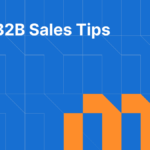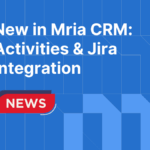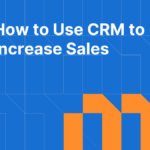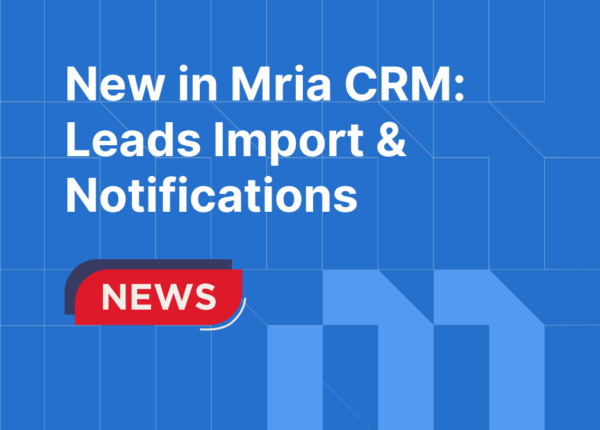If you want to increase revenue growth while improving sales team performance, sales performance management (SPM) is for you. Sales Performance Management is the structured process of planning, tracking, and optimizing the performance of your salesforce to align with business goals. When done right, it supports more accurate sales planning, stronger team motivation, and measurable growth. This is the foundation of performance management in sales.
In this guide, we’ll explore what sales performance management is, why it’s important, and how to improve sales performance from strategy and tools to tracking key SPM metrics and execution. We’ll also cover sales performance management best practices, practical examples, and how to choose the best sales performance management software for your context.
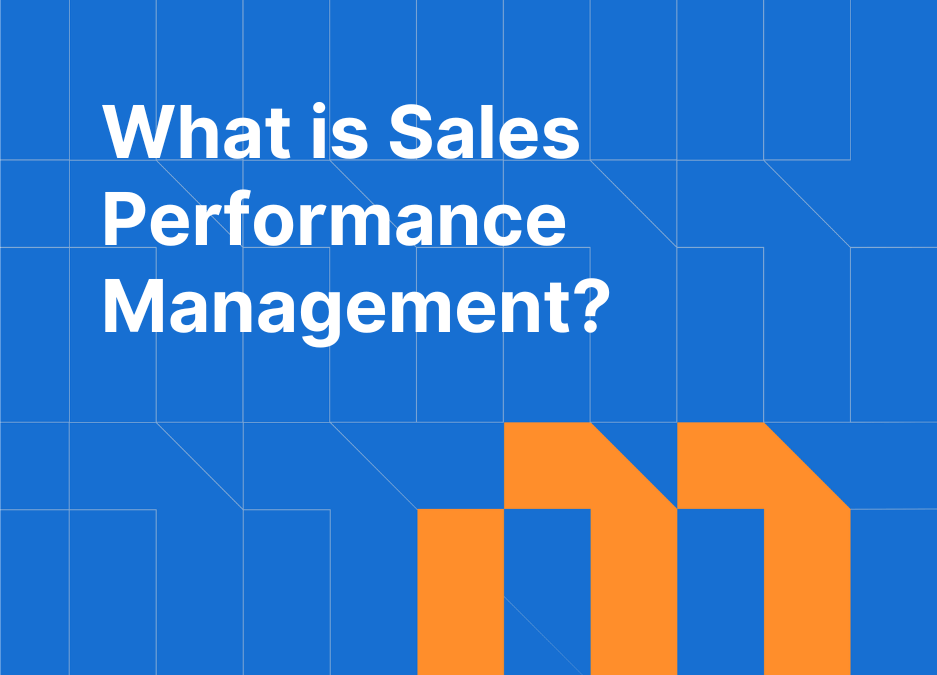
Table of Contents
What is Sales Performance Management?
Sales Performance Management (SPM) is the structured process of planning, tracking, and optimizing the performance of sales teams to align with organizational goals. At its core, SPM ensures that every sales activity, from setting quotas to rewarding performance, is directly tied to business growth and customer satisfaction.
Unlike ad-hoc management approaches, sales performance management provides a systematic framework. It combines sales performance management tools for data tracking, systems for workflow automation, and software solutions that centralize planning, forecasting, and compensation management.
For growing organizations, especially those scaling fast, SPM is not just a management style but an operational necessity. Whether you’re a small business searching for the best sales performance management software for small business, or a global enterprise looking for enterprise-grade solutions, adopting SPM provides the foundation for predictable growth.
Sales Performance Management Takeaways
- Sales performance management software improves planning, management, and forecasting by providing real-time visibility into team performance.
- It aligns sales incentives and goals with broader organizational priorities, helping to foster customer loyalty and create long-term value.
- SPM systems increase transparency and fairness in compensation, which enhances motivation and reduces turnover.
- It replaces fragmented legacy systems and manual processes with integrated, purpose-built SPM solutions tailored for sales operations.
- SPM enables easy integration with CRM, ERP, and other core platforms, streamlining workflows and reducing operational inefficiencies.
- Advanced sales performance management tools adopt AI and machine learning to generate predictive insights, adjust quotas intelligently, and support more efficient operations.
Why Sales Performance Management Matters
The sales environment today is more complex than ever. Reps face longer buying cycles, more stakeholders, and tighter competition. Without structure, even talented teams can fall short.
This is where performance management in sales creates impact. By aligning incentives with business goals, tracking performance with real-time data, and creating transparency in rewards, SPM ensures that sales organizations operate with discipline and accountability.
But beyond accountability, SPM is about growth. It provides managers with clarity, helps operations teams reduce inefficiencies, and ensures reps stay motivated and supported. In short, it’s the difference between managing reactively and leading proactively.
Benefits of Sales Performance Management Systems and Solutions
Implementing a strong sales performance management system delivers measurable value across the entire organization. The right SPM solutions streamline workflows, reduce costs, and improve revenue outcomes while creating accountability and motivation at every level of the sales process.
For the Business
- Financial clarity: SPM software provides detailed insights into revenue trends and growth projections.
- Better forecasting: Reliable sales performance management metrics help leadership allocate resources and plan confidently.
- Strategic alignment: Ensures sales execution supports long-term business objectives and market expansion.
For Sales Operations
- Efficiency at scale: Automates territory assignments, quota distribution, and incentive plans.
- Process discipline: Standardized rules reduce errors in commission payouts and reporting.
- Operational visibility: Centralized dashboards offer a single source of truth for performance data.
For Sales Managers
- Real-time coaching: Visibility into team performance allows managers to identify bottlenecks early and provide targeted support.
- Data-driven management: Replaces guesswork with actionable SPM metrics like win rates, conversion rates, and pipeline health.
- Goal alignment: Ensures reps’ targets are achievable and tied to company objectives.
For Sales Teams
- Skill growth: Continuous feedback and coaching help reps close skill gaps and improve performance.
- Clear expectations: Personalized quotas and transparent compensation structures boost motivation.
- Fair recognition: Automated commission calculations and structured reward programs reduce disputes.
Together, these benefits highlight why adopting sales performance management software is no longer optional but a key driver of sustainable growth.
Key Components of Sales Performance Management
Effective Sales Performance Management consists of five core elements that collectively boost the productivity and results of your sales team. Together, they create an end-to-end sales performance management process.
Sales Planning and Goal Setting
In a high-performing organization, work is planned in advance by setting clear, measurable goals and expectations for individuals and teams. Sales planning involves setting strategic goals such as revenue targets, market coverage, and customer targeting. Involving employees helps them understand what needs to be done, why it matters, and what is expected. Plans should be achievable, accountable, and flexible.
Sales Performance Monitoring
Assignments and projects should be monitored regularly to ensure consistent progress toward goals. Effective monitoring involves measuring performance, providing continuous feedback, and conducting progress reviews against expectations. This enables early course-correction instead of waiting for annual appraisals.
Sales Team Training Programs
Identify and close skill gaps through training, stretch assignments, and better methods. Development programs strengthen job-related skills and help employees adapt to change. Planning and monitoring phases reveal both weaknesses to support and strengths to amplify.
Sales Performance Evaluation
Summarize employee performance with structured, policy-aligned appraisals that compare results to goals and standards. Ratings inform compensation and talent decisions. While team outcomes matter, ratings are assigned to individuals based on objective criteria.
Sales Success Recognition
Acknowledge individual and team contributions through formal and informal mechanisms. Performance management in sales improves when managers combine structured feedback with timely recognition. Formal reward programs (bonuses, time off, non-financial recognition) sustain motivation.
Sales Performance Management Metrics: How to Measure Success
Before implementing the process, businesses must decide what success looks like. That means selecting the right sales performance management metrics.
Core Sales Performance Management Metrics:
Quota Attainment
Measures the percentage of a sales rep’s target achieved in a given period.
Formula: (Actual Sales ÷ Sales Target) × 100
Win Rate
Shows how often your team successfully closes deals.
Formula: (Closed-Won Deals ÷ Total Opportunities) × 100
Conversion Rate
Indicates the efficiency of turning leads into customers.
Formula: (Closed Deals ÷ Qualified Leads) × 100
Sales Cycle Length
Tracks the average time it takes to close a deal from first contact.
Shorter cycles often suggest a more efficient process.
Average Deal Size
Average revenue per closed deal, indicates deal quality and upsell effectiveness.
Formula: Total Revenue ÷ Number of Deals
Lead Response Time
How quickly your team follows up with new leads; faster responses improve win probability.
Sales Growth
Revenue change over time; reveals performance trends.
Formula: ((Current Period Revenue − Previous Period Revenue) ÷ Previous Period Revenue) × 100
Customer Satisfaction (CSAT)
Post-sale feedback that predicts renewals, advocacy, and expansion.
These Sales Performance Management metrics form the backbone of performance tracking, ensuring that the SPM process is measurable and actionable.
How to Implement Sales Performance Management Process?
The sales performance management process is a structured technique that organizations use to achieve their business goals. With goals and metrics defined, the next step is execution. SPM implementation follows a set of clear steps:
1. Develop Sales Performance Management Strategy
Define what success looks like by identifying key sales performance management metrics such as quota attainment, conversion rates, and sales productivity. These indicators align the team with business goals and reveal where support is needed.
2. Communicate Objectives Across the Team
Ensure everyone understands the reasoning behind quotas and targets, and encourage feedback to promote alignment. Let reps set personal development goals nested within company objectives.
3. Choose the Right Sales Performance Management Tool
A good sales performance management system should integrate with CRM/ERP to provide a unified view of activities and results. Look for real-time tracking, customizable dashboards, goal setting, automated reporting, and collaboration features.
4. Manage and Support Your Sales Team
Provide resources, training, mentorship, and frequent check-ins to address challenges early. Consistent coaching builds capability and improves retention.
5. Provide Feedback
Use performance data to deliver personalized, timely reviews. Highlight strengths, pinpoint gaps, and give practical recommendations. Consistent feedback fosters accountability and sustained success.
Sales Performance Management Best Practices
Even with the right tools, success depends on disciplined execution. Here are proven sales performance management best practices:
- Align incentives to strategy – Tie compensation mechanics directly to priority KPIs (e.g., multi-year deals, new logo growth, NRR).
- Balance quotas with market reality – Use bottom-up data (capacity, territory potential, pipeline health) to complement top-down targets.
- Instrument everything – Standardize definitions and dashboards for your core SPM metrics to eliminate reporting disputes.
- Coach continuously – Replace annual reviews with short, cadence-based coaching loops tied to leading indicators (activity quality, stage conversion).
- Automate commissions – Use SPM tools to calculate payouts, surface real-time earnings to reps, and prevent shadow accounting.
- Close the loop with post-sale data – Integrate support and product usage signals to refine qualification criteria and forecasting.
- Run quarterly plan hygiene – Rebalance territories and quotas quarterly; archive stale opportunities; reset baselines after market shifts.
- Document the playbook – Treat your sales performance management system as the single source of truth for rules, exceptions, and approvals.
Sales Performance Management Examples
When exploring sales performance management examples, most readers want to understand how real businesses apply SPM systems and tools to solve everyday challenges. Below are four examples, drawn from industry case studies and analyst research, that show the measurable value of adopting the right SPM process, metrics, and software.
Example 1: Enterprise ROI with Varicent SPM
A Forrester Total Economic Impact™ study on Varicent’s SPM solution found that organizations achieved significant improvements in accuracy, alignment, and motivation. In one case, Waste Management implemented Varicent and achieved ROI within six months, largely by cutting down the man-hours previously spent on manual compensation calculations. This demonstrates how enterprise-grade SPM solutions quickly pay for themselves while scaling to complex sales organizations.
Source: Forrester/Varicent Case Study
Example 2: Reducing Commission Errors with Performio
Commission disputes can erode trust and slow down sales teams. Companies using Performio’s SPM platform report a dramatic reduction, often elimination, of commission calculation errors. Yorktel/Caregility, for example, cut their commission processing time by 50% after switching from a legacy solution. This not only saved finance teams hours of reconciliation work but also boosted rep confidence in payouts.
Source: Performio Case Studies
Example 3: Preventing Overpayments with Canidium
Manual processes often result in hidden overpayments, sometimes averaging 3–5% of total compensation budgets. Canidium highlights how organizations that move to structured sales performance management systems uncover and stop these “silent leaks.” By adopting SPM software, companies can ensure accurate payouts, reduce risk, and often recoup the software investment within one to two years.
Example 4: Improving Transparency and Forecasting Accuracy
Beyond compensation, SPM tools also drive visibility into sales activity and forecasting. Companies using dedicated SPM platforms report greater transparency across the sales hierarchy, streamlined workflows, and better resource allocation. Performio notes that modern SPM solutions give leaders a single source of truth for performance metrics, leading to more accurate forecasts and data-driven coaching.
Why These Examples Matter
These SPM examples show that regardless of size or industry:
- SaaS companies streamline commissions.
- Manufacturers expand coverage with optimized territories.
- Small businesses modernize reporting and metrics.
- Enterprises gain transparency, accuracy, and measurable ROI.
Together, they illustrate how the right sales performance management process, metrics, and software can deliver tangible business outcomes.
Best Sales Performance Management Software
Choosing the best sales performance management software depends on your company size, industry, and sales strategy. While all organizations benefit from streamlined compensation, better forecasting, and transparent performance tracking, the right tool will vary based on complexity and scale.
Leading Enterprise-Grade SPM Solutions
These vendors are recognized by Gartner, Forrester, and sales operations leaders for their robust, enterprise-ready platforms:
- Varicent – A leading SPM platform that offers end-to-end planning, quota management, incentive compensation, and advanced analytics. Used by global enterprises to scale complex sales organizations.
- Xactly – Known for incentive compensation management and predictive analytics. Xactly supports enterprises needing accurate payouts, quota optimization, and revenue intelligence.
- Anaplan – Popular for connected planning, including sales performance, financial forecasting, and territory/quota planning. Strong in scenario modeling.
- SAP Sales Performance Management – Enterprise-grade solution with deep ERP and CRM integration, focusing on compensation accuracy, territory alignment, and incentive visibility.
- Oracle SPM Cloud – Offers territory management, incentive compensation, and advanced analytics integrated with Oracle’s larger CX and ERP ecosystem.
Best Sales Performance Management Software for Small Business
Small businesses need simpler, cost-effective SPM tools that provide value without heavy setup:
- Performio – User-friendly platform ideal for mid-market and SMBs. Offers automated commission tracking, real-time dashboards, and easy-to-use reporting.
- CaptivateIQ – A modern, flexible commission automation platform designed for startups and small to mid-size businesses. Known for quick deployment and transparent compensation reporting.
- QuotaPath – Tailored for small sales teams, QuotaPath offers simple commission tracking, goal-setting, and rep-friendly dashboards at accessible pricing.
Evaluation Checklist for SPM Tools and Systems
When selecting a sales performance management solution, look beyond brand names and focus on features that support scalability and adoption:
- End-to-End Integration – Centralize planning, forecasting, and compensation to avoid fragmented systems and reduce errors.
- Advanced Sales Planning – AI forecasting, headcount planning, and quota distribution aligned with market potential.
- Quota Management – Supports top-down and bottom-up strategies, with analytics-driven adjustments.
- Territory Optimization – Automated assignments, geospatial mapping, and responsive rebalancing.
- Compensation Automation – Commission engines, real-time visibility for reps, and compliance safeguards.
- Performance Analytics – Custom dashboards, benchmarking, and AI insights for continuous improvement.
- AI & Machine Learning – Predict revenue trends, identify enablement gaps, and automate workflows.
- Direct Integrations – CRM, ERP/Finance, HRIS, and warehouse connectors.
- Training and Support – Strong onboarding, self-service resources, and responsive troubleshooting.
- Market Trust – Analyst recognition, verified case studies, and proven benchmarks.
Conclusion
Sales performance management plays an important role in helping sales organizations operate effectively and hit their goals. It encompasses everything from defining expectations and managing incentive programs to monitoring results and ensuring accountability. With the right sales performance management process, metrics, and software, you create a scalable system that drives predictable results.
Whether you’re an enterprise or searching for the best sales performance management software for small business, modern SPM solutions provide the structure, insights, and automation needed for long-term success.

